Load Regulation
| Test | 12V | 5V | 3.3V | 5VSB | DC/AC (Watts) | Efficiency | Fan Speed (RPM) | PSU Noise (dB[A]) | Temps (In/Out) | PF/AC Volts |
| 10% | 6.547A | 1.945A | 1.996A | 0.971A | 100.009 | 90.513% | 0 | <6.0 | 44.62C | 0.971 |
| 11.976V | 5.143V | 3.307V | 5.152V | 110.49 | 40.39C | 115.1V | ||||
| 20% | 14.123A | 2.919A | 2.996A | 1.168A | 199.96 | 92.867% | 0 | <6.0 | 45.24C | 0.986 |
| 11.970V | 5.14V | 3.304V | 5.137V | 215.318 | 40.58C | 115.08V | ||||
| 30% | 22.061A | 3.406A | 3.499A | 1.367A | 300.011 | 93.058% | 0 | <6.0 | 46.31C | 0.989 |
| 11.965V | 5.139V | 3.301V | 5.122V | 322.387 | 41.25C | 115.05V | ||||
| 40% | 29.977A | 3.895A | 4.002A | 1.567A | 399.703 | 92.809% | 372 | <6.0 | 41.96C | 0.989 |
| 11.959V | 5.137V | 3.298V | 5.107V | 430.67 | 47.55C | 115.02V | ||||
| 50% | 37.559A | 4.874A | 5.01A | 1.768A | 499.427 | 92.253% | 372 | <6.0 | 42.30C | 0.992 |
| 11.953V | 5.13V | 3.293V | 5.091V | 541.371 | 48.32C | 114.99V | ||||
| 60% | 45.215A | 5.853A | 6.019A | 1.971A | 599.978 | 91.543% | 406 | <6.0 | 42.78C | 0.994 |
| 11.946V | 5.127V | 3.29V | 5.075V | 655.408 | 49.35C | 114.96V | ||||
| 70% | 52.811A | 6.833A | 7.029A | 2.175A | 699.706 | 90.726% | 583 | 12.2 | 43.38C | 0.995 |
| 11.940V | 5.124V | 3.286V | 5.059V | 771.229 | 50.44C | 114.94V | ||||
| 80% | 60.480A | 7.813A | 8.041A | 2.28A | 799.724 | 89.722% | 751 | 20.0 | 43.64C | 0.995 |
| 11.935V | 5.12V | 3.283V | 5.046V | 891.327 | 51.71C | 114.9V | ||||
| 90% | 68.499A | 8.305A | 8.537A | 2.385A | 899.498 | 88.924% | 866 | 24.8 | 44.76C | 0.996 |
| 11.927V | 5.118V | 3.28V | 5.033V | 1011.528 | 53.81C | 114.87V | ||||
| 100% | 76.326A | 8.797A | 9.064A | 2.999A | 999.514 | 87.97% | 1037 | 30.9 | 45.64C | 0.996 |
| 11.921V | 5.115V | 3.276V | 5.002V | 1136.207 | 55.72C | 114.83V | ||||
| 110% | 84.090A | 9.781A | 10.173A | 3.006A | 1100.147 | 86.918% | 1166 | 34.2 | 46.76C | 0.997 |
| 11.914V | 5.112V | 3.273V | 4.992V | 1265.731 | 57.66C | 114.8V | ||||
| CL1 | 0.117A | 15.292A | 15.643A | 0A | 131.296 | 85.402% | 469 | 8.1 | 41.41C | 0.983 |
| 11.983V | 5.12V | 3.298V | 5.173V | 153.74 | 48.83C | 115.09V | ||||
| CL2 | 0.117A | 24.446A | 0A | 0A | 126.386 | 83.441% | 524 | 10.0 | 41.36C | 0.983 |
| 11.987V | 5.113V | 3.309V | 5.181V | 151.466 | 47.39C | 115.09V | ||||
| CL3 | 0.116A | 0A | 25.024A | 0A | 83.887 | 78.082% | 424 | 6.1 | 40.07C | 0.971 |
| 11.982V | 5.147V | 3.297V | 5.175V | 107.435 | 45.69C | 115.11V | ||||
| CL4 | 83.891A | 0A | 0A | 0A | 999.987 | 88.706% | 946 | 27.4 | 45.60C | 0.996 |
| 11.920V | 5.134V | 3.285V | 5.115V | 1127.31 | 53.58C | 114.84V |
Load regulation is within 1% on all major rails but 3.3V.
Ripple Suppression
| Test | 12V | 5V | 3.3V | 5VSB | Pass/Fail |
| 10% Load | 8.2 mV | 8.2 mV | 6.3 mV | 5.8 mV | Pass |
| 20% Load | 8.8 mV | 8.1 mV | 6.4 mV | 6.6 mV | Pass |
| 30% Load | 9.6 mV | 8.2 mV | 6.4 mV | 6.5 mV | Pass |
| 40% Load | 10.3 mV | 8.3 mV | 6.6 mV | 6.4 mV | Pass |
| 50% Load | 12.1 mV | 8.3 mV | 6.8 mV | 6.9 mV | Pass |
| 60% Load | 13.1 mV | 8.6 mV | 6.7 mV | 7.7 mV | Pass |
| 70% Load | 14.6 mV | 8.5 mV | 7.1 mV | 7.6 mV | Pass |
| 80% Load | 14.5 mV | 9.3 mV | 10.4 mV | 8.8 mV | Pass |
| 90% Load | 15.9 mV | 9.5 mV | 10.4 mV | 10.2 mV | Pass |
| 100% Load | 20.0 mV | 11.6 mV | 12.3 mV | 11.0 mV | Pass |
| 110% Load | 21.7 mV | 11.7 mV | 12.4 mV | 11.0 mV | Pass |
| Crossload 1 | 12.8 mV | 12.2 mV | 13.9 mV | 6.6 mV | Pass |
| Crossload 2 | 11.3 mV | 11.5 mV | 7.0 mV | 5.5 mV | Pass |
| Crossload 3 | 12.4 mV | 8.5 mV | 15.9 mV | 5.2 mV | Pass |
| Crossload 4 | 20.9 mV | 10.5 mV | 8.1 mV | 8.4 mV | Pass |
Ripple suppression is good overall.
Pages:
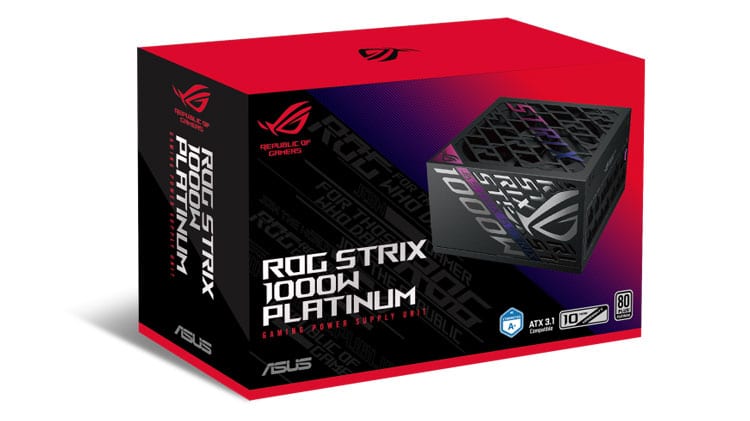
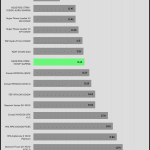
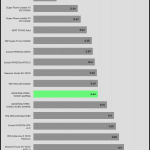
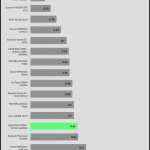
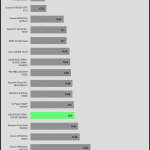
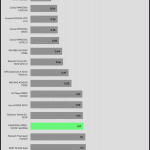

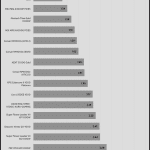

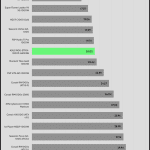
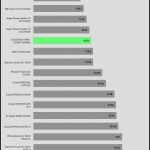
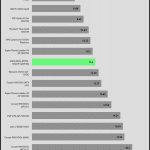
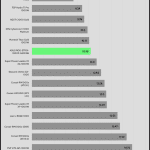

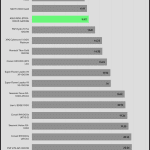
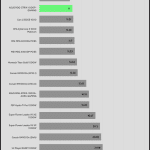
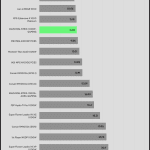


Fantastic web site. Lots of useful info here. I am sending
it to a few pals ans additionally sharing in delicious.
And of course, thank you to your sweat!
Asus Rog Strix 1000p or Corsair RM1000x ATX 3.1 or XPG Core Reactor II 1000w?
Does GaN has any impact except efficiency which isn’t expoited, like longevity and decreased temps?
What is the deal with the two extra “IVS” pins they included on the 12V-2×6 cable? Does anything change if they are plugged in or not?
Has Asus fixed the problem with the fan noise? Is there any information about it?
yes, they changed fan.
Unfortunately, the problem with the fan bearing noise is not resolved. It’s really annoying and I sent it back
sorry to hear that. You probably got one of the early units.
Does anyone know when Asus Thor III 1000w will be released?
I have been using asus thor 1000w p2 for about 1 month. coil whine sound is coming regardless of whether the computer is off or on. the computer case is on my desk 60-70cm away from my ear distance.
coil whine can be from the hardware combination, not only from the PSU. Please note that.
Hi Aris,
Are you going to test the new Asus Thor III 1000w? I ordered the Asus strix ATX3.1 1000w Platinum, but I’m wondering if it’s better to go with the new Thor that was announced today.
In your experience, Great wall vs CWT, which one is better? (As I understood the new Thor is manufactured by CWT)
Hi! Unfortunately Asus marketing doesn’t know my existance. They don’t consider me a KOL (key opinion leader)
https://www.einarexglobal.com/psu/
aris did u tested some einarex psu, because i’ve seen one of them certified by cybenetics gold, i was wonder about the internals of these psu because my fellow worries about it because it’s not listed at the cybenetics websites, would you review it on hwbusters too ?
Hi! We tested them but have not issued the official certs yet.
I have an insider tip that the Rog Thor III 1200W Platinum is also based on the Enchance (a more advanced platform), so you shouldn’t expect much better performance (+ they replaced the fancy fabric-braided cables with mediocre PVC-braided ones, exactly the same as this one Strix).
In general, we can say that Thor III Platinum has achieved the status of a premium power supply.
>In general, we can say that Thor III Platinum has achieved the status of a premium power supply.
Thor III Platinum has lost the status of a premium power supply)
Sad that the GaN mosfets was just a marketing gimmick here. Now I wonder if you can check if this is also the case with the ROG Thor 1200W Platinum III which is, supposedly a more premium plat PSU or if there is no point in it compared to the Strix plat in performance. But also the ROG THOR 1600W Titanium III when compared to the previous Thor Titanium.